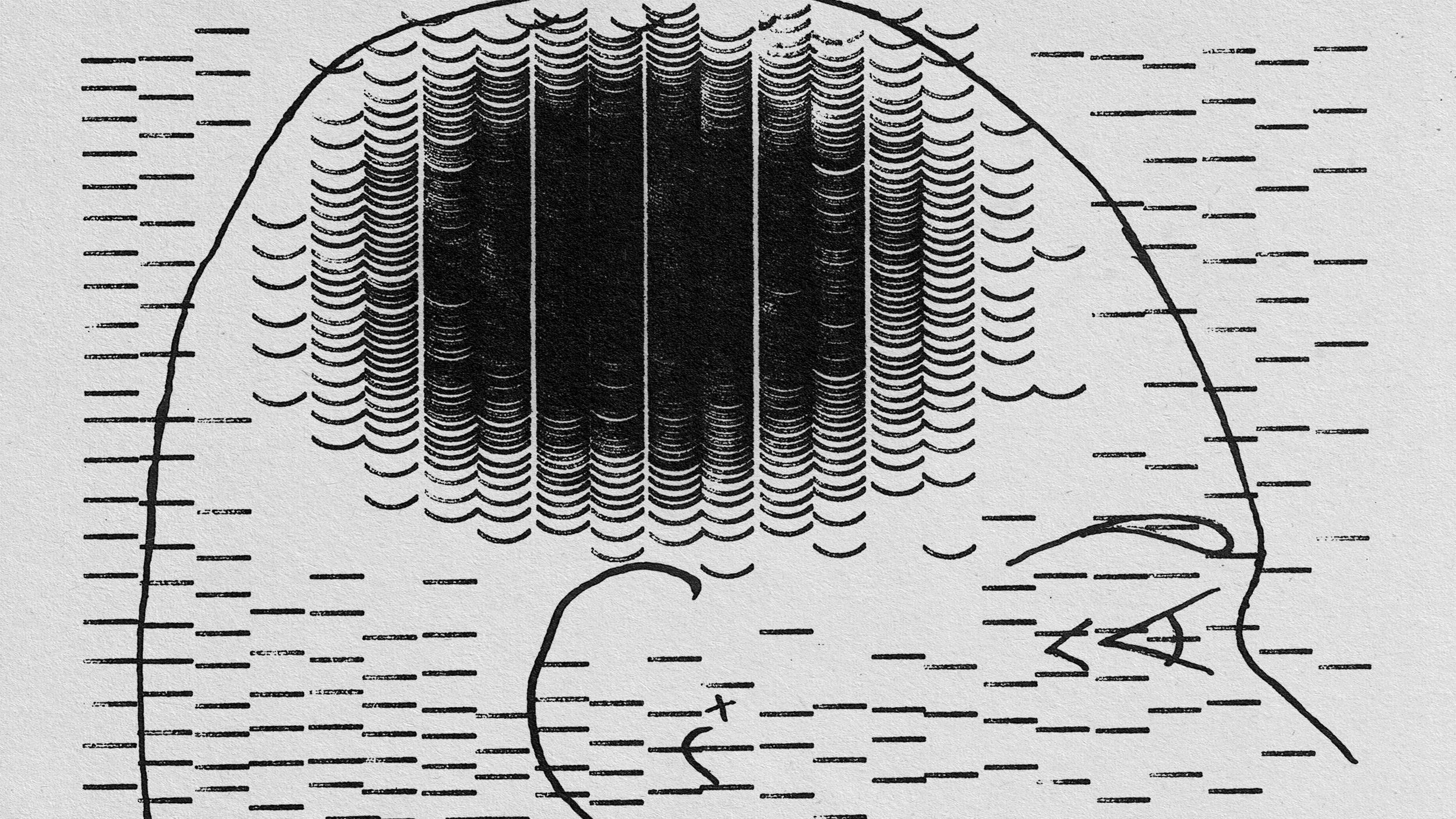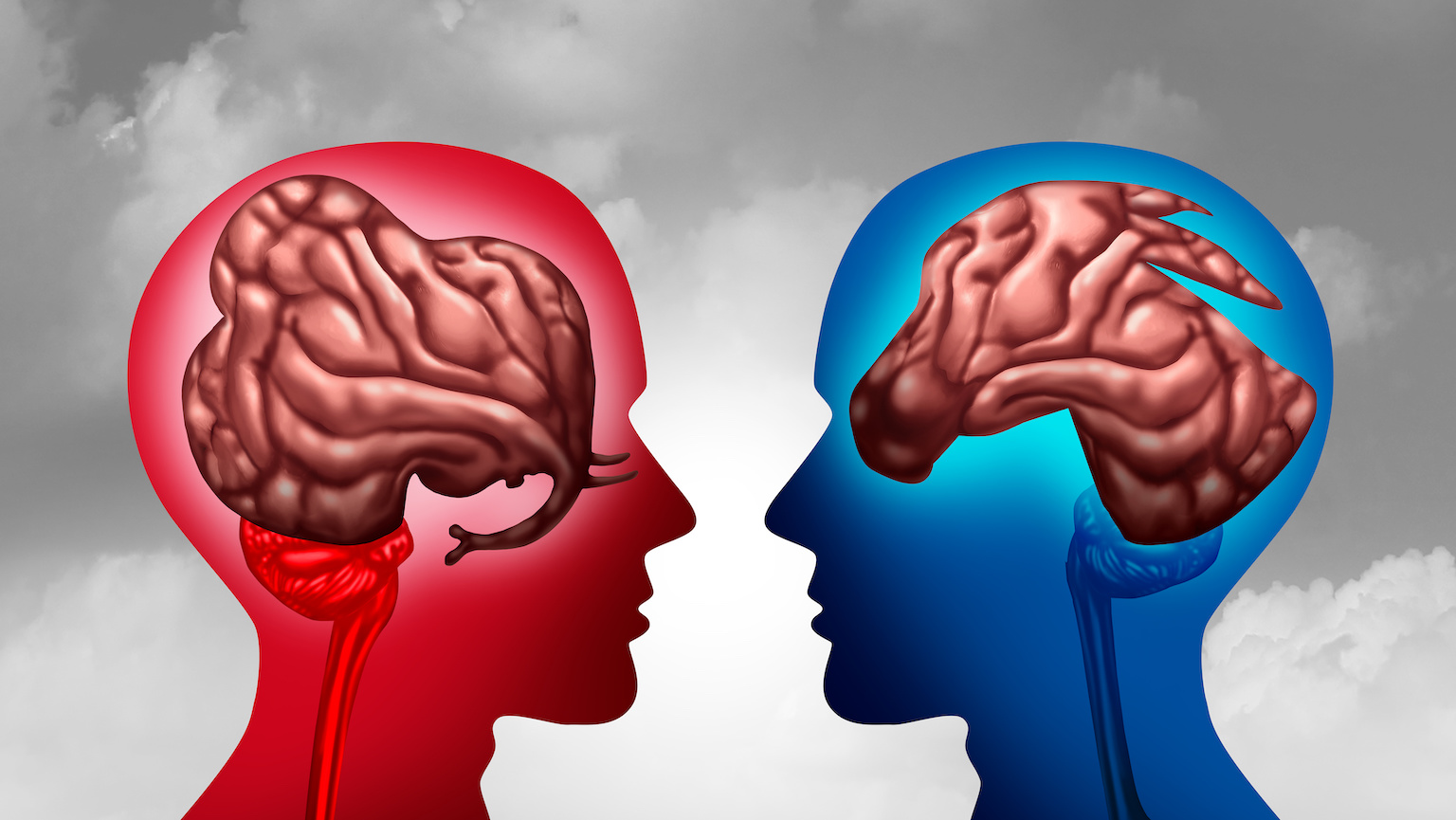My brain doesn’t picture things. What’s wrong with me?

I’m lying down in a white cylinder barely wider than my body, surrounded on all sides by a mass of sophisticated machinery the size of a small camper van. It’s an fMRI machine, one of the technological marvels of modern neuroscience. Two small inflatable cushions squeeze my temples, keeping my head still.
“We are ready to begin the next batch of exercises,” I hear Dr. Horikawa’s gentle voice saying. We’re underground, in one of the laboratories of Tokyo University’s Faculty of Medicine, Hongo Campus. “Do you feel like proceeding?”
“Yes, let’s go,” I answer.
The machine sets in motion again. A powerful current grows inside the cryogenically cooled wires that coil around me, showering my head with radio waves, knocking the hydrogen atoms inside my head off their original spin axis, and measuring the rate at which the axis recovers afterward. To the sensors around me, I’m now as transparent as a glass of water. Every tiny change of blood flow anywhere inside my brain is being watched and recorded in 3-D.
A few seconds pass, then a synthetic female voice speaks into my ears over the electronic clamor: “top hat.” I close my eyes and I imagine a top hat. A few seconds later a beep tells me I should rate the quality of my mental picture, which I do with a controller in my hand. The voice speaks again: “fire extinguisher,” and I repeat the routine. Next is “butterfly,” then “camel,” then “snowmobile,” and so on, for about 10 minutes, while the system monitors the activation of my brain synapses.
Understanding aphantasia means learning something more about what it means to be human.
For most people, this should be a rather simple exercise, perhaps even satisfying. For me, it’s a considerable strain, because I don’t “see” any of those things. For each and every one of the prompts, I rate my mental image “0” on a 0 to 5 scale, because as soon as I close my eyes, what I see are not everyday objects, animals, and vehicles, but the dark underside of my eyelids. I can’t willingly form the faintest of images in my mind. And, although it isn’t the subject of the current experiment, I also can’t conjure sounds, smells, or any other kind of sensory stimulation inside my head. I have what is called “aphantasia,” the absence of voluntary imagination of the senses. I know what a top hat is. I can describe its main characteristics. I can even draw an above-average impression of one on a piece of paper for you. But I can’t visualize it mentally. What’s wrong with me?
My whole life, I’ve been aware—sometimes painfully so—of my own peculiarities, strengths, and weaknesses: A terrible memory, a good sense of direction, and what I felt was a lack of “visual creativity,” among others. I always thought these were just random, disconnected traits, and didn’t think much about them. Who doesn’t have their quirks?
Then, some time in 2021 (not coincidentally, I forget exactly where or when) I read about aphantasia for the first time, and it hit me hard: When people say “picture this scene in your head,” they aren’t speaking metaphorically! People can actually invoke shapes and colors in their minds. The shock of this realization was followed by a piecing together of many of those little idiosyncrasies of mine into a single, coherent phenomenon that fit with the scientific description of the condition. By the time my formal diagnosis came, I was already quite sure I was aphantasic.
I share this trait with many people. Occasional reports of people claiming to be without a “mind’s eye” go back to the 1800s, with several cases briefly mentioned in the scientific literature throughout the 20th century. Yet these cases were ignored by the broader scientific community, relegated to the fringes of the field as outliers or misunderstandings.
It was only in the 2010s that the topic began to attract attention. A man approached Adam Zeman, professor of cognitive and behavioral neurology at the University of Exeter, in the United Kingdom, claiming to have lost his mind’s eye following a heart surgery. In 2010, Zeman published a study showing that the man had different brain activation patterns from other subjects when trying to imagine things.1
This was an interesting case study on its own, but something more surprising followed the publication of Zeman’s paper: Several people contacted him claiming to have had that same condition for as long as they could remember. Zeman and his collaborators assessed their claims using the Vividness of Visual Imagery Questionnaire (VVIQ), a popular measure of internal visualization quality, and found that these individuals indeed seemed to have little to no ability to visualize at will. The researchers published these findings in 2015, and proposed to call the condition “aphantasia”—literally “the absence of images” in Greek.2
With this new label, word about aphantasia finally started to spread within the neuroscience community and the broader public. More groups of researchers around the world began studying it, and every year a larger number of papers on the topic reaches scientific journals. We now know that roughly 1 out of 25 people are “aphantasics” (or “aphants,” in internet slang)—a rare condition, but common enough that each of us must know several people in the category.
For those equipped with a trusty inner eye, hearing about aphantasia can be a puzzling experience. How can someone even function as a human being without the ability to imagine pictures and sounds?
The biggest source of confusion with aphantasia comes from the assumption that “imagination” and “forming mental images” are one and the same thing. This is, of course, incorrect. I’m able to imagine anything, except it is all devoid of sensory representations. The imagined objects exist in my mind as interconnected concepts, like bullet lists of facts about things. For example, when I reread the scene in Ernest Hemingway’s The Old Man and the Sea where the protagonist battles a giant marlin, I’m able to take in a large amount of information: We’re on his skiff, bobbing on the waves of the deep waters of the Gulf of Mexico, the sun hammering mercilessly on the poor man while he pulls on the line for hours on end. I can reason about the situation, try to predict what could happen next, and relate with the character’s plight.
None of this requires having a picture of the scene in my head. This way of imagining is, perhaps, more abstract than what most people are used to, but not significantly less useful.
A surprising aspect of this is that, for me, the physical “bullet-list concepts” don’t just float haphazardly in nothingness, but are embodied in coherent three-dimensional structures that I can manipulate in my mind. In the scene of the old fisherman, I can imagine moving around the small boat, sitting down next to Santiago, and I can “feel” the monstrous mass of the fish floating near the vessel. This spatial awareness might be what allows me to find my way around my bedroom in darkness: I know where the furniture is and the rough distances between things even without seeing them. The science is still unclear as to why someone like me can form spatial thoughts without the accompanying imagery, but some speculate that it might have something to do with a separation of these functions in and around the visual cortex.
For non-aphants, it’s also hard to imagine how those of us without this sensory mind’s eye remember events if we can’t call to mind images, smells, or sounds. Scientists have begun trying to untangle this difficult question about the brain as well. In a 2015 paper, a group of researchers from the University of Toronto led by psychologist Daniela Palombo identified a new syndrome they called “Severely Deficient Autobiographical Memory,” or SDAM for short.3 People with SDAM lack the ability to relive past experiences in their minds. While this condition is rare among the general population, a preliminary survey hints at a link with aphantasia, with as many as 51 percent of a sample of 2,000 SDAM individuals also having aphantasia.
My own experience is similar. Past episodes of my life—when I can recall them at all—feel distant and non-sensory. SDAM is a new discovery, still unknown to most practicing psychiatrists, so people like me have to rely on self-diagnosis for the time being. But the symptoms described by the researchers match with what I’ve always taken for granted. I would describe my recollections as summaries of key facts rather than first-person “mind movies.” When asked, out of the blue, about an experience I’ve surely had—say, any childhood birthday party—my mind first responds by drawing a blank. It feels as if my episodic memories were filed into a “mental cabinet” without an index. Many memories are in there, somewhere, but retrieving them is a daunting task unless I’m provided with very specific prompts. With some groping work of deduction (where did I live at the time? Who did I hang out with?) I can gather enough hints to bring out some locations and non-visual facts: I had a big party in our countryside garden when I was 11 or 12; there was cake; a lot of kids running around and … that’s about it.
How does all of this affect my life? The surprising answer is that it doesn’t, at least not in any debilitating way. To my great relief, people rarely ask me what happened at parties held decades ago. But even when there is a need to describe scenes or people visually, I usually have enough “verbal facts” and eloquence to give a satisfying answer, without the need to replicate the actual pictures in my head.
Among researchers, the consensus seems to be that aphantasia doesn’t meet the criteria to be called a disability, and that aphantasic individuals, in general, are fully functional and just as successful at living their lives and performing in their careers as the rest of the population. This seems to be further supported by a new paper published by two researchers at Sorbonne University.4 They presented their participants, including many aphantasics, with a series of tasks involving the comparison of shapes, colors, words, faces, and spatial relations in one’s head. Aphantasics were as accurate as the other participants in all the tests, although they took longer to solve the imagery-based tasks, presumably because they used different, less-direct strategies to complete them.
Yet, some of those who discover they have aphantasia despair at the news. I’ve seen people make claims like “my whole life was a lie” and “this must be what ruined my marriage.” While I’m not quite as pessimistic, I can relate with that minority of fellow aphants. Sure, aphantasia and SDAM may not be causing major problems in our daily lives, but wouldn’t their subtle effects compound over time? And could they not be the cause of many of our other more embarrassing weaknesses and shortcomings?
For many of us, the aftermath of learning about one’s aphantasia leads to some sort of self-consciousness crisis. Suddenly, your performance in every other aspect of life comes under scrutiny, and blaming your congenital aphantasia for it is almost irresistible. Is drawing without a reference so difficult because of my aphantasia? Could SDAM be why I’m so bad at keeping in touch with people? Would I be less socially awkward without it? Very few of these supposed connections have been tested yet, let alone confirmed by solid scientific studies. Yet almost every aphantasic I’ve talked to does this. But everyone seems to focus their self-doubt on whatever they don’t like about themselves, scapegoating different shortcomings.
I have learned to embrace the diversity of aphantasia, and I hope to spread the word about it. And so does Junichi Takahashi, the first researcher I talked to about my condition. Takahashi is a psychologist at Fukushima University and was one of the first scientists to pay attention to aphantasia in Japan, where I’ve lived since 2011. He set up a website with the VVIQ survey, which is what led me to confirm my suspicions of having aphantasia. I got in touch with him directly and began to learn more about the science behind mental visualization and its absence.
Rather than studying aphantasia as a single phenomenon, Takahashi is trying to bring clarity to its diversity. In July 2023, he and several co-authors published a paper examining subtypes of aphantasia.5While most previous studies relied solely on the VVIQ questionnaire to identify aphantasic individuals, Takahashi and his team administered a battery of additional psychological question-sets to the same subjects and analyzed their correlations.
One of these questionnaires probed the vividness of multi-sensory mental imagery, including the sense of hearing, smell, and so on. Can aphantasics mentally replay their parents’ voices or the unique taste of cheesecake? Another questionnaire tested the tendency toward verbally oriented (relying more on words to figure out things) or visually oriented (relying more on images) thinking styles. Yet another one was used to detect “face blindness,” the inability to recognize faces.
Their statistical analysis revealed that all of these factors are somewhat correlated, but none fully. For instance, many of their aphantasic subjects lacked all of their “mind senses,” but some did have the ability to imagine sounds, flavors, or other non-visual sensations. The paper also found that face blindness did occur more often among people with aphantasia (40 percent) than in the control group (20 percent), but is far from being a universal aphantasic trait.
But all this talk of questionnaires and self-reports brings us to the age-old question: How do we know that aphantasia really exists, as opposed to being a form of psychological denial or simply a different interpretation of the same inner experience?
When aphantasia was first formally proposed, some researchers wondered whether the purported lack of visualization ability might in many cases be, not a congenital trait, but a psychopathological issue, such as neurosis or a defensive response against trauma. A kind of “philosophical language barrier” further complicates the issue: We might be talking about the same thing with different words and, language being the only medium we have to compare inner experiences, we have (or, rather, had) no way of confirming that. Even Ludwig Wittgenstein, one of the great philosophers of the 20th century, wondered about this very scenario more than 60 years before aphantasia got its name: If a person claimed they can’t imagine a picture but is still able to draw one, he asked, should we believe that something different is really going on in their head?
Scientists are now finding ways to answer these questions with hard, objective data. “Even before aphantasia became a thing, researchers tried separating people with low VVIQ from those with high VVIQ, and found that the performance at certain tasks is different between the two groups,” Takahashi explained to me. “There is also a lot of research showing a good correlation between VVIQ scores and fMRI scans.” The way the questions are posed in the questionnaire seems to work well enough to pick out individuals with demonstrably different visualization abilities.
Of the groups working on this front, Joel Pearson’s is one of the most active. His team at the University of New South Wales, in Australia, has been researching mental imagery since long before aphantasia became widely known. In 2022, his team even found a measurable physical characteristic of aphantasics.6 They discovered that, while the pupils of typical people involuntarily contracted when imagining bright shapes, no such response happened to the aphantasic group. In other words, Pearson’s team showed the first physiological difference confirming the reports of people claiming to have aphantasia. It looks like, at least in most cases, something different is happening inside our heads.
Aphantasia is turning out to be a little cornucopia of scientific insights.
And some are trying to go even further. That’s why I periodically get into the fMRI machine in Dr. Horikawa’s lab to get my brain scanned. A researcher at NTT Communication Science Laboratories in Japan, Tomoyasu Horikawa specializes in using AI to decipher the contents of the human visual cortex. He has recently turned his attention to aphantasia. I connected with him in April 2023, when Takahashi suggested I join Horikawa’s new research project. Horikawa is still collecting data from me and several other people, but preliminary, unpublished analysis indeed shows a quantitative difference in brain activity when aphantasic and typical subjects imagine things. When measuring the “distinctness” of brain activation patterns—how accurately the same patterns are repeated in a subject’s brain when imagining the same object, and how reliably different when imagining different objects—aphantasic subjects seem to score a bit lower. But he says that much more data is necessary to definitely tell. That may turn out to be the best proof of the neural differences between people with and without the condition.
All things considered, learning about my aphantasia made me doubly optimistic, both at the collective and personal levels.
In terms of social impact, aphantasia is turning out to be a little cornucopia of scientific insights. Already scientists are working with aphantasics not only to understand the condition itself, but also to shed light on the intricate workings of the human brain in general.
Rebecca Keogh, a cognitive neuroscientist at Macquarie University, in Australia, for example, has looked into the mechanisms of PTSD by comparing the occurrence of intrusive thoughts between aphantasics and people who can visualize. For Horikawa, aphantasia is a way to isolate the precise neural processes that create mental imagery in the general population. And researchers from the universities of Calgary and Radboud in the Netherlands recently published an article in Nature Reviews Psychology arguing for the use of aphantasia to resolve long-running debates about “embodied cognition”—a theory that treats thinking as a process involving mental simulations of one’s body and sensations, as opposed to only abstract concepts and symbols. The absence of something—like the lack of “inner senses” in aphantasics—can teach us much about the presence of it. This might be the biggest reason why I participate in these experiments: Understanding aphantasia means learning something more about what it means to be human.
In a sense, discovering aphantasia as a scientific topic is a bit like landing on a beach on an unknown continent. We know it’s new, but we have no idea of its geography and size. The binary division between “aphantasic” and “everyone else” might be a short-lived one. The subtype studies of Takahashi and others may lead to a more detailed map of the myriad ways a lack of visualization manifests in people and how they work around it. The brain seems to always have more surprises in store for us, more facets and inter-connections where we previously expected simplicity. We now have an even more interesting landscape to explore.
I would not want to remove the aphantasia even if it were possible.
And as this additional diversity comes into focus, it is easier for us to marvel at the paradox of human cooperation. What would seem like fundamental differences in the way we think—some with pictures, others without—do not lead to fundamental barriers in the way we talk to, connect with, and love each other. We are able to form societies and, through struggle and errors, build thriving communities despite these cognitive differences, and maybe because of them.
On the personal level, my “self-consciousness crisis” is eclipsed by a more powerful “self-knowledge renaissance.” Learning that I have aphantasia gave me the habit of carefully observing my inner experience. It led, among other things, to realizing that I may also have SDAM and mild synesthesia, something that I had never paid any attention to before. It also honed my ability to explain to others what goes on inside me. Armed with these new skills, I can say that I am better at managing myself and at picking the battles that I am best at. I feel like I have gained much and lost nothing.
Some people ask me if my aphantasia can be cured. The easy answer is no, because you can’t cure what isn’t a disease, and anyway we don’t know enough about it yet to influence it. The more sincere answer is that I would not want to remove the aphantasia even if it were possible. Temporary visualization tools? Sure. But not permanent changes to my brain. Whatever compounding effects it had on me over the decades, it helped produce the person I am today. I’m glad it did, even counting all the flaws. The question I started with—what’s wrong with me?—was both rhetorical and itself wrong. The better question is one we all ask ourselves at some point: “What makes me who I am?”
This article originally appeared on Nautilus, a science and culture magazine for curious readers. Sign up for the Nautilus newsletter.





